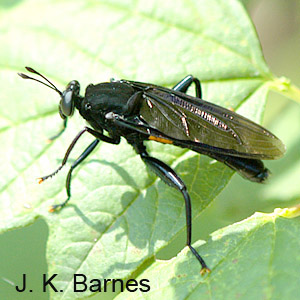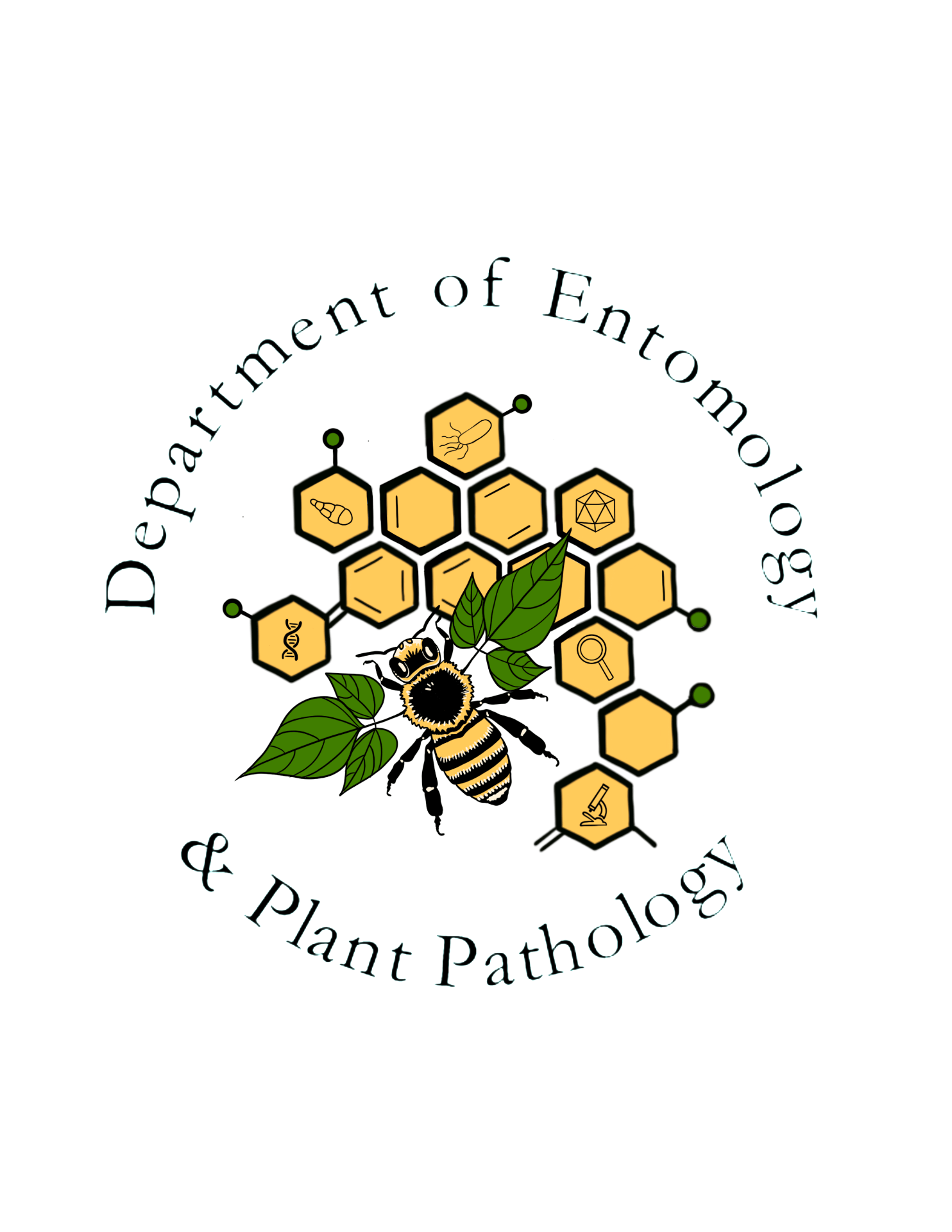Mydas fly
Order: Diptera
Family: Mydidae
Genus and species: Mydas clavatus (Drury)
This common Arkansas species is a large, 1.0-1.5 inch, striking, velvety-black wasp mimic with smoky wings, long antennae, and a bright orange marking on the top and sides of the second abdominal segment. In many ways they resemble spider wasps of the family Pompilidae. In fact, adults also mimic pompilid behavior. They appear to hover, and their legs trail behind their abdomen in flight. After landing, they may perform a mock stinging behavior, arching the abdomen in the middle and repeatedly jabbing the tip toward the substrate. They are reluctant to flee and slow to move on the approach of a potential predator, well known traits of aposematically colored species and their mimics. Adults were long presumed to be predaceous, but the lack of mandibles along with other features of mouthpart morphology and observations of flower feeding tend to indicate that they consume nectar. Mydas flies patrol their home ranges and are probably territorial, chasing away nonresident flies of the same species. Larvae are associated with decaying stumps and logs, where they feed on scarab beetle larvae. The species is widely distributed across the eastern United States and southernmost Ontario.

